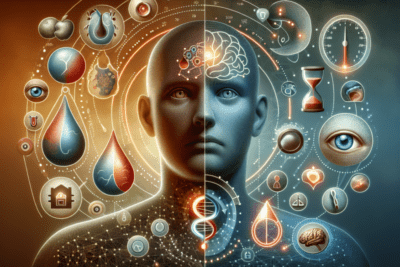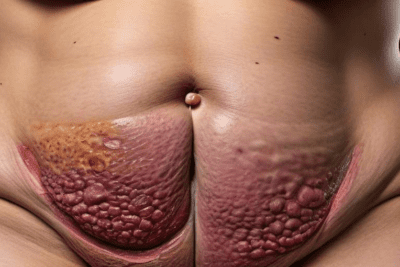
Diabetes is a chronic disease that affects millions worldwide, but not all diabetes is the same. Understanding the differences between type 1 and type 2 diabetes is essential for effective management, treatment, and lifestyle adjustments. While both conditions involve elevated blood sugar levels, their causes, symptoms, and treatments differ significantly.
What you\'ll find in this article?
- What Are the Causes of Type 1 and Type 2 Diabetes?
- Symptoms of Type 1 vs Type 2 Diabetes
- How Is Type 1 Diabetes Diagnosed?
- How Is Type 2 Diabetes Diagnosed?
- What Are the Treatment Options for Type 1 and Type 2 Diabetes?
- Can Type 1 and Type 2 Diabetes Be Prevented?
- Which Is Worse, Type 1 or Type 2 Diabetes?
- Emotional Impact of Type 1 and Type 2 Diabetes
- Understanding the Differences Between Type 1 and Type 2 Diabetes
- Preguntas Relacionadas Sobre Diabetes Tipo 1 y Tipo 2
What Are the Causes of Type 1 and Type 2 Diabetes?
Type 1 diabetes is an autoimmune condition where the immune system attacks the insulin-producing cells in the pancreas. It's unclear what exactly triggers this response, but genetics and environmental factors like viruses may play a role. Unlike type 1, type 2 diabetes develops through a combination of insulin resistance and insufficient insulin production. This form is often linked to lifestyle factors such as obesity, inactivity, and poor diet, although genetics can also contribute.
Insulin is the hormone responsible for controlling blood sugar levels. Without it, sugar accumulates in the bloodstream, leading to various health issues.
Both types of diabetes can lead to serious complications like cardiovascular disease, kidney issues, and nerve damage if not managed properly.












Symptoms of Type 1 vs Type 2 Diabetes
Symptoms of type 1 diabetes often develop abruptly and at a younger age. They include excessive thirst, frequent urination, hunger, fatigue, and blurred vision. Type 2 diabetes symptoms can be more subtle and sometimes go unnoticed. Many people with type 2 diabetes may experience similar symptoms to type 1 but over a longer period, and they often coincide with signs of insulin resistance like darkened skin areas.
Since type 2 diabetes can develop slowly, many individuals may not realize they have the disease until they face complications, making regular screening important, especially for those at risk.
How Is Type 1 Diabetes Diagnosed?
Diagnosing type 1 diabetes involves measuring the presence of autoantibodies in the blood, which indicate an autoimmune attack on the pancreas. Blood tests also measure blood sugar levels, and an elevated level on more than one occasion typically confirms the diagnosis.
Doctors may also conduct a glycated hemoglobin (A1C) test, which reflects average blood sugar levels over the past 2 to 3 months.
How Is Type 2 Diabetes Diagnosed?
Type 2 diabetes diagnosis also uses the A1C test, along with fasting blood sugar tests and an oral glucose tolerance test. These tests measure how your body handles glucose over time. A high A1C level or blood sugar level indicates diabetes.
Early detection is crucial, as it can help prevent complications and allow individuals to start management strategies right away.
What Are the Treatment Options for Type 1 and Type 2 Diabetes?
Managing type 1 diabetes requires a lifelong commitment to insulin therapy, as the body produces no insulin. Patients use insulin injections or an insulin pump to control their blood sugar levels.
With type 2 diabetes, lifestyle changes like diet and exercise are often the first steps in management. Medications and/or insulin therapy may become necessary if these changes aren't enough to control blood sugar levels.
Can Type 1 and Type 2 Diabetes Be Prevented?
- Preventing type 1 diabetes is not yet possible as the exact cause is unknown.
- However, type 2 diabetes prevention is often more viable through healthy lifestyle choices, including maintaining a healthy weight, eating a balanced diet, and engaging in regular physical activity.
Which Is Worse, Type 1 or Type 2 Diabetes?
It's not a matter of "worse" as both types can lead to severe health issues if not managed properly. However, they require different management strategies and have different implications in terms of daily care, long-term outlook, and potential for complications.
Understanding the specific challenges and treatments for each type is crucial for those affected to maintain their health and quality of life.
Emotional Impact of Type 1 and Type 2 Diabetes
Diabetes can take a significant emotional toll on individuals and their families. Those diagnosed often experience feelings of anger, denial, or depression. The daily demands of managing diabetes can also lead to burnout.
Support groups, counseling, and open communication with healthcare providers can help manage the emotional aspects of living with diabetes. Families and friends play an essential role in providing support.
Understanding the Differences Between Type 1 and Type 2 Diabetes
Type 1 diabetes is commonly diagnosed in children and young adults, which is why it was previously referred to as juvenile diabetes. Type 2 diabetes is more common in adults but is increasingly seen in children and adolescents due to rising obesity rates.
Differences between type 1 and type 2 diabetes include their pathophysiology, with type 1 being an autoimmune disease and type 2 being largely a result of lifestyle choices and genetic predisposition.
Here's a quick insight video that shows a comprehensive view of diabetes. This may help you better visualize the differences between type 1 and type 2 diabetes.
Preguntas Relacionadas Sobre Diabetes Tipo 1 y Tipo 2
What Is the Main Difference Between Type 1 and Type 2 Diabetes?
The main difference lies in the cause and development. Type 1 diabetes is an autoimmune disease where the body's immune system attacks insulin-producing cells. In contrast, type 2 diabetes is characterized by the body's ineffective use of insulin due to insulin resistance, often exacerbated by obesity and a sedentary lifestyle.
Both types lead to high blood sugar levels but require different management approaches.
Which Is More Serious Between Type 1 and Type 2 Diabetes?
It's not about which is more serious, as both have serious health implications. Type 1 diabetes requires constant and careful monitoring of blood sugar levels to administer insulin properly. Type 2 diabetes, if left unmanaged, can lead to severe conditions like heart disease, stroke, and neuropathy.
Does Type 2 Diabetes Require Insulin?
Not always. Many people with type 2 diabetes can manage their condition with lifestyle changes and oral medications. However, as the disease progresses, some individuals may require insulin therapy to maintain blood sugar levels within a healthy range.
Can Type 2 Diabetes Be Reversed?
While there's no cure for type 2 diabetes, some individuals can achieve remission, which means maintaining a blood sugar level within a normal range without medication. This often requires significant lifestyle modifications, such as weight loss, dietary changes, and increased physical activity.
Remember, diabetes management is a personal journey, and what works for one person may not work for another. Regular consultations with healthcare providers are essential to tailor a treatment plan that's right for you or your loved one.
✨ Other articles you might be interested in:
- Understanding Hypo (Hypoglycaemia): Causes, Symptoms, and Management
- Gestational diabetes: Understanding causes and symptoms
- Exploring the possibility of a diabetes cure
- Exploring how insomnia could play direct role in causing type 2 diabetes
- Understanding genital itchiness as a symptom of diabetes in the UK











